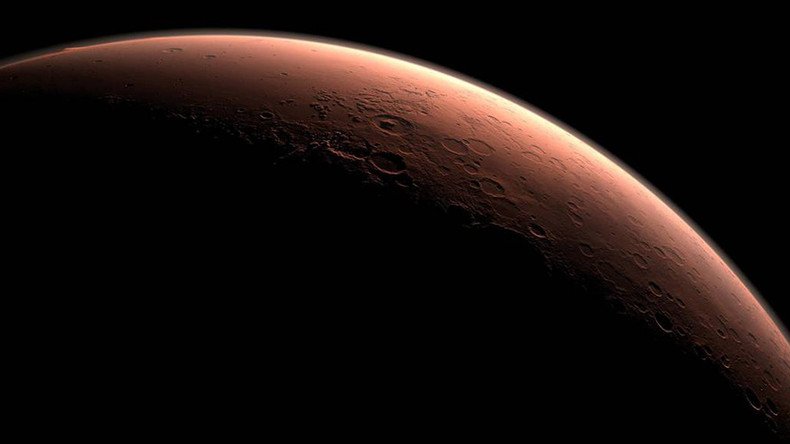Happy Martian New Year: NASA’s alien imagery from the Red Planet (PHOTOS)

If you thought 2016 would never end spare a thought for the future settlers of Mars. Space enthusiasts are celebrating the end of another Mars year, a whopping 687 earth days after it began on the Red Planet.
NASA led the celebrations on Friday with a tweeted depiction of the Mars Curiosity Rover sporting a party hat and observing fireworks on the Red Planet.
“Happy #Martian New Year from us & our robotic explorers,” NASA said.
It might be Cinco de Mayo on Earth, but it's New Years on Mars! Happy #MartianNewYear from us & our robotic explorers. pic.twitter.com/mN2afhNnLH
— NASA JPL (@NASAJPL) May 5, 2017
Today is Mars' New Years Day! A year on #Mars is 687 Earth days. pic.twitter.com/f27kHQf8zb
— NASA Kennedy / KSC (@NASAKennedy) May 5, 2017
Ls=0-Happy Martian New Year from @westernu#HiRISE#Team273. Colorful layers in crater wall, collapse pits & unusual textures. @westernuCPSXpic.twitter.com/75ckYxwO3R
— Livio L. Tornabene (@rocdocmars) May 5, 2017
Happy #MartianNewYear! Should auld acquaintance be forgot? No way. Can't wait to share exploration with you on this next trip around the sun pic.twitter.com/j9WOlp2b3X
— Curiosity Rover (@MarsCuriosity) May 5, 2017
Happy Martian New Year everyone! Hope your sol is filled with margaritas and plenty of oxygen. pic.twitter.com/kiDztqZJzK
— Shannon Stirone (@shannonmstirone) May 5, 2017
Happy Martian New Year to @MarsCuriosity@SarcasticRover@MarsRoverspic.twitter.com/ApAQ6NJdyd
— ScottE (@Scottebemeup) May 5, 2017
@NASA_Orion virtually talks #JourneyToMars to audiences celebrating the Martian New Year in Mars, PA pic.twitter.com/rOLp7VW9Er
— Patricia (@PatriciaMoore) May 6, 2017
Mars is around 78 millionkilometres further away from the sun than earth, making the planet’s orbit around the life giving star and subsequently its calendar year much, much longer.
Planetary scientist Tanya Harrison, who worked on NASA’s Mars Reconnaissance Orbiter between 2009-2012, used the annual milestone to break down the concept of Martian time.
On Mars, we measure time in terms of "solar longitude"—or "Ls" for short. The s is a subscript, so we usually say "L sub S" colloquially.
— Tanya Harrison (@tanyaofmars) May 5, 2017
Today marks the beginning of "Mars Year 34," with Mars Year 1 arbitrarily defined as Mars' spring equinox on April 11, 1955 in this paper. pic.twitter.com/3IjLslQlvm
— Tanya Harrison (@tanyaofmars) May 5, 2017
Harrison said the Red Planet is now in “Year 34” after Mars Year 1 was officially documented in 1955.
Today marks the beginning of "Mars Year 34," with Mars Year 1 arbitrarily defined as Mars' spring equinox on April 11, 1955 in this paper. pic.twitter.com/3IjLslQlvm
— Tanya Harrison (@tanyaofmars) May 5, 2017
As for time on the martian surface, Mars doesn't have time zones. Time for rovers/landers is generally kept in terms of "local solar time."
— Tanya Harrison (@tanyaofmars) May 5, 2017
Humans may be some way off celebrating a Martian new year while living on the Red Planet, but NASA has collected a vast array of images showcasing what awaits if people make it there.
Here are some of the most mind boggling parts of the alien world. Enjoy.












